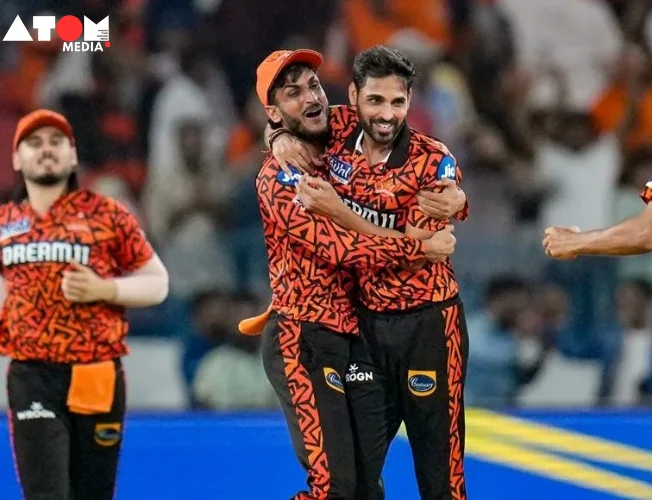The Indian Premier League 2024 match between Sunrisers Hyderabad (SRH) and Rajasthan Royals (RR) was a thrilling contest that ended well before the end. The last delivery revealed an oddity in the Laws of Cricket and the Decision Review System (DRS), but SRH prevailed by a single run.
A Dramatic Finish: Powell’s Review and a Confusing Outcome
In order to reach their goal of 202, RR needed two runs off the last ball. Rovman Powell tried to flick a full toss from SRH bowler Bhuvneshwar Kumar, but Powell was smacked in the pads instead. Without thinking, the umpire signaled Powell out for leg before wicket (LBW) by raising his finger.
Powell decided to do a review because the game was so close to being decided. Ball Tracking, which forecasts the ball’s trajectory, showed three reds (hitting the wicket), while the UltraEdge replays, which identify bat-to-ball contact, produced no sound. LBW was upheld on the field, and SRH won thrillingly by one run.
A DRS Conundrum: Did it Really Matter?
An intriguing topic came up: what would have happened if the DRS had reversed the umpire’s ruling? The match would have ended the same way even if Powell had been ruled not out. This is the reason why:
The Law and the Dead Ball
Cricket Law 20.1.1.3 states that “the ball will be deemed to be dead from the instant of the incident causing the dismissal.” Put another way, play ends when the umpire raises his finger to signal a dismissal. At that point, the ball is declared dead.
DRS After a Dismissal: A Pointless Exercise?
The dismissal in the SRH vs. RR match happened as soon as the umpire made his call. Despite the fact that the DRS verdict was announced later, it had no bearing on what happened next.
Hypothetical Scenario: No Change in Result
Let us entertain a fictitious situation in which Powell was declared not out by the DRS, overturning the umpire’s ruling. Any runs scored after the LBW call would not have counted since the ball was already dead.
Assume that upon his departure, Powell had managed to scramble one or even two. The Law said that the play was finished, therefore those runs would not have been added to RR’s total. Even so, RR would have been one run shy of the goal.
A Curious Loophole in the Gentleman’s Game
This instance brings to light a feature of the cricket DRS that seems a little illogical. Even while it is essential for rectifying umpiring errors, there are instances—such as the one involving the SRH-RR game—where the dead ball law renders the DRS result meaningless.
A Spark for Change?
This occurrence may lead to conversations regarding possible changes to the Law or the DRS to guarantee full alignment. If the umpire indicates a dismissal on the final ball, the DRS might not function anymore, or the law might be changed to recognize the DRS result even in these situations.
Beyond the DRS: A Match of High Drama
The match was closely contested, but the drama surrounding the last ball overshadowed the whole game. After Travis Head (58) and Heinrich Klaasen (76*) set a solid platform for the SRH, Bhuvneshwar Kumar’s three wickets in the last over ensured victory.
Although Jaiswal and Parag gave RR a significant early lift, they ultimately failed. While SRH’s victory maintains them in the running for the playoffs, RR’s narrow setback means they are still comfortably atop the points table.
Read more: Marketing News, Advertising News, PR and Finance News, Digital News





